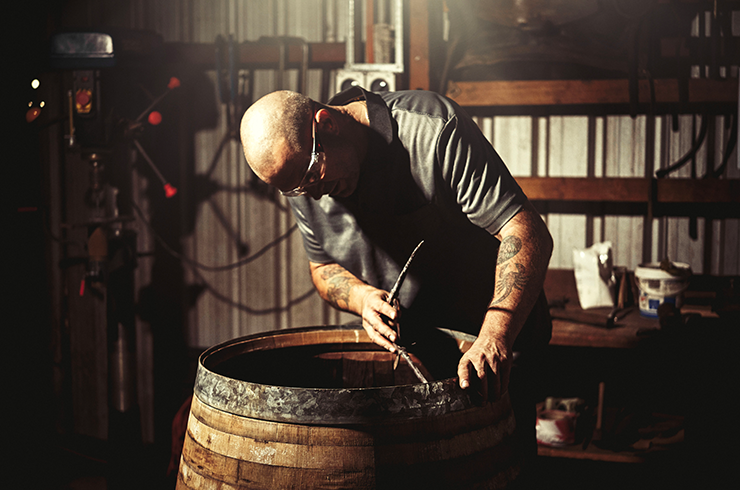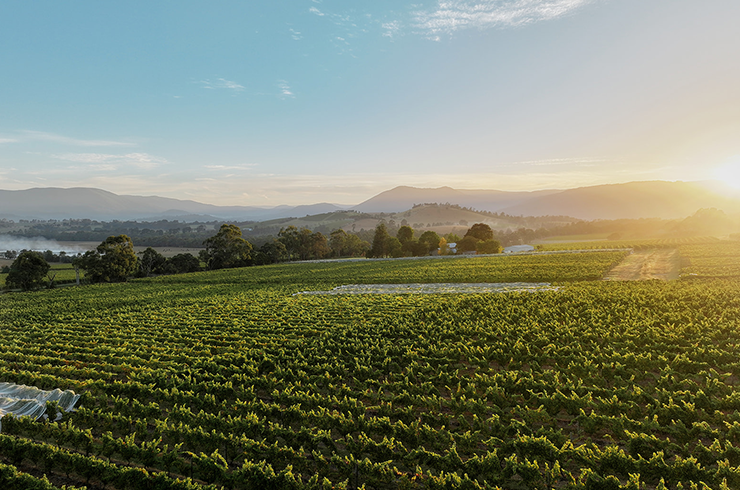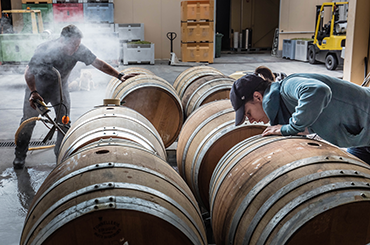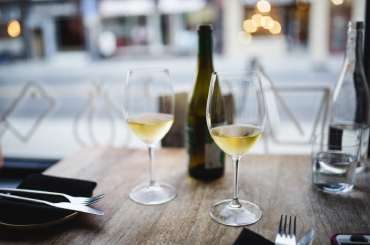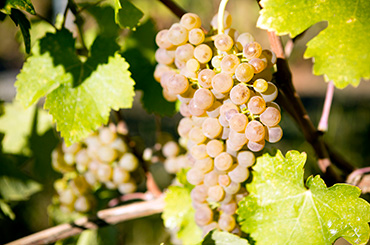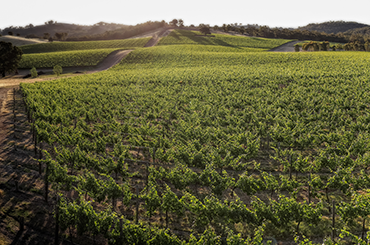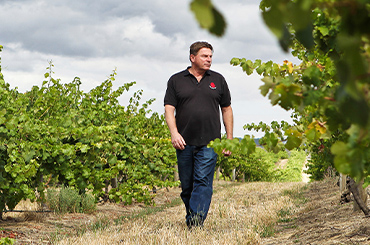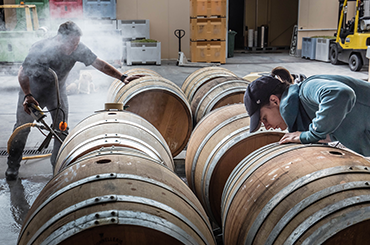Go to: Getting to know the Rhone | Why Rhone whites? | Rhone white grapes | Where in Australia do Rhone whites grow? | Pairing Rhone whites with food
Getting to know the Rhone
The Rhone wine region is a diverse area, its climate and landscape changing as you get closer to the Mediterranean coast. It connects with Provence at its base, and France’s third-largest city, Lyon, sits just above its tip. It’s well known for its earthy, savoury syrahs and spicy grenache blends, with notable names such as Cote-Rotie, Cotes du Rhone, and Chateauneuf-du-Pape, but here, we give you a little more insight into the whites.
- Condrieu: is the home of viognier. If you want to try some of the world’s most celebrated styles, with lush stone-fruit flavours, then look no further.
- Saint-Peray: this appellation produces bright whites made from marsanne and roussanne, including still and sparkling wines.
- Die: several appellations in the Diois district specialise in whites made from clairette and muscat blanc, in particular, Clairette de Die (a rich and fruity sparkling), Cremant de Die (a drier, traditional method style) and Coteaux de Die (still white wines).
- Hermitage: is well known for its marsanne-dominant blends, made in limited quantities.
- Saint-Joseph and Crozes-Hermitage: each also produce a small amount of white wine made from marsanne and roussanne.
Northern Rhone
The narrow north, with its steeply sloping vineyards and granitic soils, experiences more extreme conditions than the south. For this reason, it’s responsible for a tiny portion of the Rhone’s wine production – less than 10 per cent. While Rhone whites are mostly a minor addition to syrah in this area, there are a couple of appellations that champion them in Rhone white blends, sparklings, and single-variety wines. Look out for the names ahead.

Southern Rhone
As you head further south, the landscape gets wider and flatter and the climate warmer and drier, and the vineyards feature sandy, stony soils. The southern Rhone is where the bulk of wines are made, and the most famous of these is its grenache blends. Several major appellations allow a melting pot of red and white varieties in the mix, but grenache is usually the dominant component. It’s principally reds and mostly blends, but you can find some great whites.
- Beaumes-de-Venise: produces sweet, fortified wines made from muscat blanc a petits grains.
- Chateauneuf-du-Pape: makes a small number of white blends from the six allowed varieties, which include grenache blanc, roussannne, clairette, and bourboulenc, among others.
- Lirac: is a good place to look for powerful whites made from grenache blanc, bourboulenc, clairette and roussanne, often with a splash of piquepoul, marsanne and/or viognier.
- Cotes du Rhone: the largest appellation of the Rhone Valley will be well known to many, however, its white wines are less prominent. Regardless, Cotes du Rhone whites do exist, with the main grape varieties being bourboulenc, clairette, grenache blanc, roussanne, marsanne and viognier.

Why Rhone whites?
Rhone white varieties offer intense aromatics, refreshing acidity and wonderful texture, ranging from minerally and citrusy to nutty, honeyed, mouth-filling styles. When blended, which happens more often than not in the Rhone Valley, you get a mix of complementary characteristics. Thanks to the complexity this provides and the many guises in which you can find Rhone whites, they make a fantastic companion at the dining table. Love chardonnay? Try Rhone whites.
Rhone white grapes
The reason roussanne works so beautifully in blends with marsanne is the aromatics and acidity it brings. It has a more lifted, floral bouquet and mineral palate, adding an element of elegance to these medium-bodied white wines. You can find roussanne as a varietal wine, but it’s not as common.
Where in Australia do Rhone whites grow?
Viognier is probably the more recognisable of the Rhone white varieties, but it, marsanne and roussanne have a similar presence around Australia. There’s a bit of muscat blanc a petits grains, too (it’s one of Australia’s top 10 white varieties, sitting just behind riesling). Overall, though, these styles are less established and fall under the “other” whites category in Australia. That said, there are a handful of producers proudly waving the Rhone white flag.
Tahbilk in the Nagambie Lakes region of central Victoria leads the charge with marsanne and has one of the most significant single holdings of the variety in the world. Its 1927 Vines Marsanne is a consistent high-performer across vintages – and affordable, too. Down in South Australia, historic Barossa winery Yalumba champions viognier like no other, producing a whopping six styles. In nearby McLaren Vale, Yangarra makes several compelling roussanne wines, which complement its focus on grenache. The Coriole family is playing around with some of the more obscure types such as grenache blanc and piquepoul, also in McLaren Vale, and so is Ashley Ratcliff of Ricca Terra Vintners in the Riverland region of SA. Back in Victoria, the Yarra Valley has quite a few wineries that feature Rhone whites as part of their stables, with notable producers including Yarra Yering, Soumah, Warramunda, Yeringberg and Serrat. Beechworth and Bendigo also make some stellar Rhone-style whites, which work well in these areas thanks to granite soils that are comparable to those of Condrieu (aka the home of viognier).
Pairing Rhone white wines with food

Related article: A beginner's guide to Australian white wine
